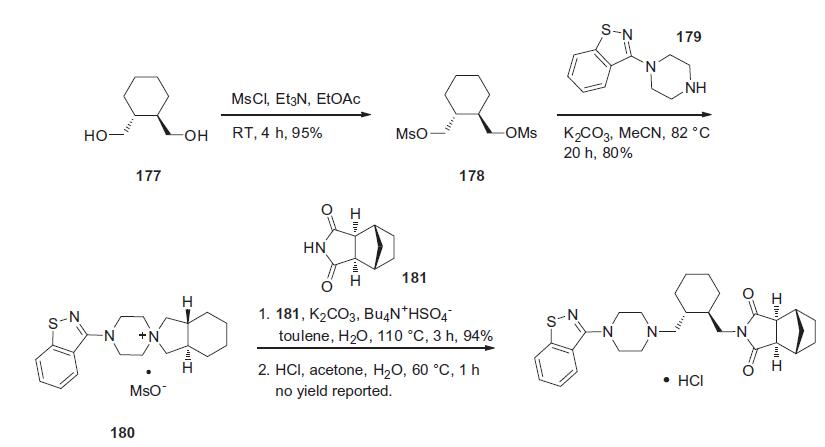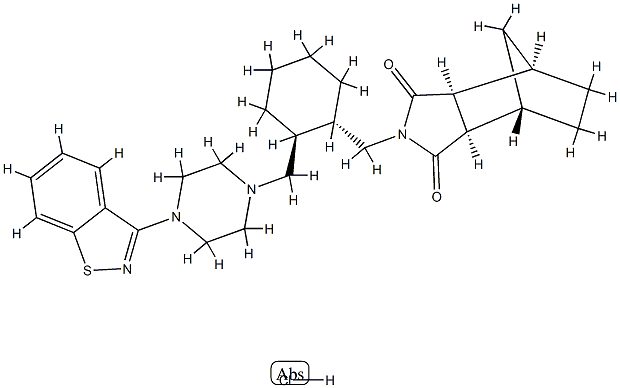Lurasidone hydrochloride is the hydrochloride form of Lurasidone. It is an atypical antipsychotic. It is indicated for the treatment of schizophrenia, depressive episode associated with bipolar I disorder in adults when used alone or in combination with lithium or valproate. Lurasidone is a benzothiazol derivative that is an antagonist and binds with high affinity to Dopamine-2, 5-HT2A receptor, and 5-H7 receptors. It is generally thought that antagonism of serotonin receptors can improve the negative symptoms of psychoses and reduce the extrapyramidal side effects associated with typical antipsychotics.
Nakamura, M, et al. "Lurasidone in the treatment of acute schizophrenia: a double-blind, placebo-controlled trial." Journal of Clinical Psychiatry70.6(2009):829.
Meyer, J. M., A. D. Loebel, and E. Schweizer. "Lurasidone: a new drug in development for schizophrenia." Expert Opinion on Investigational Drugs18.11(2009):1715.
https://en.wikipedia.org/wiki/Lurasidone
https://www.drugbank.ca/drugs/DB08815
An antipsychotic used for treatment of schizophrenia.
Lurasidone hydrochloride is an antipsychotic developed by the
Japanese firm Dainippon Sumitomo and approved by the U.S.
FDA for the treatment of schizophrenia. The compound exhibits
significant antagonist effects at the D2, 5-HT2A, and 5-HT7 receptors
which are linked to learning and cognition. In contrast to available
antipsychotics, lurasidone lacks anticholinergic side effects,
giving it an improved safety profile against existing treatments.139
The drug is manufactured under the trade name Latuda� and possesses
a linear molecular topology which can be subdivided into
three regions: a piperazine benzothiazole, a [2.2.1]-bicycloheptane
fused succinimide, and a trans-1,2 disubstituted cyclohexane.
The large scale preparation of lurasidone involves an interesting
ring-opening alkylation reaction of a spirocyclic tetralkyl
ammonium salt to produce the 1,2-trans-substituted cyclohexane
subunit. The synthesis commenced with the bismesylation
of commercially available diol 177, which proceeded in high yield to give disulfone 178. This bis-electrophile underwent
dialkylation with commercially available piperazine 179 under
basic conditions, giving rise to ammonium species 180, isolated
in 80% yield as the mono-mesylate salt. This compound was immediately
subjected to alkylative conditions in the presence of commercially
available succinimide 181 to provide lurasidone in 94%
yield from 180, and lurasidone hydrochloride (XVI) was
achieved by subsequent salt formation procedure.


